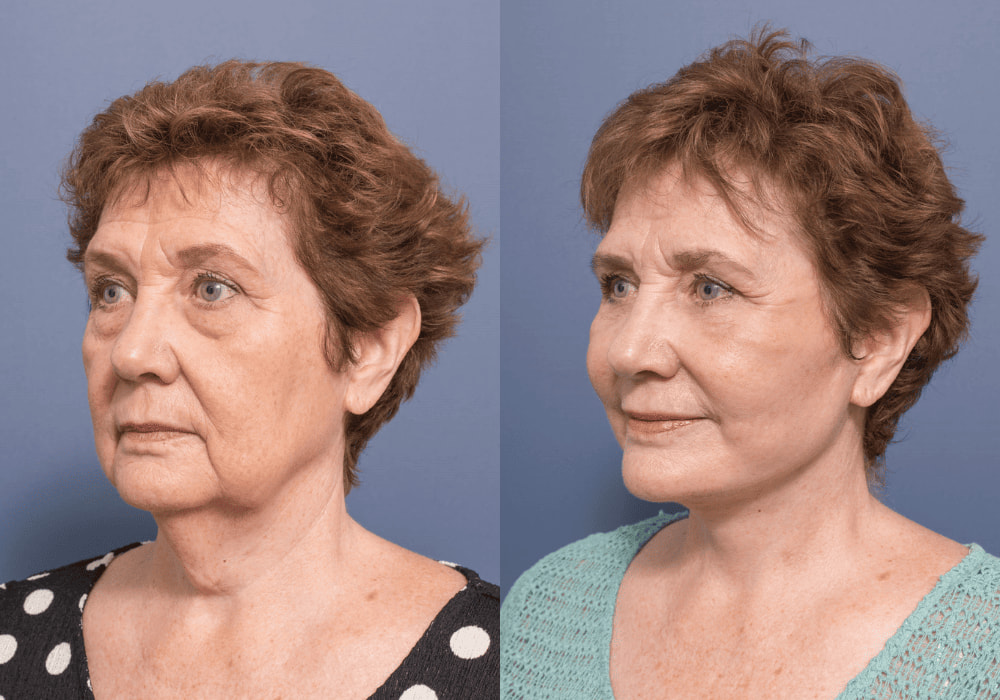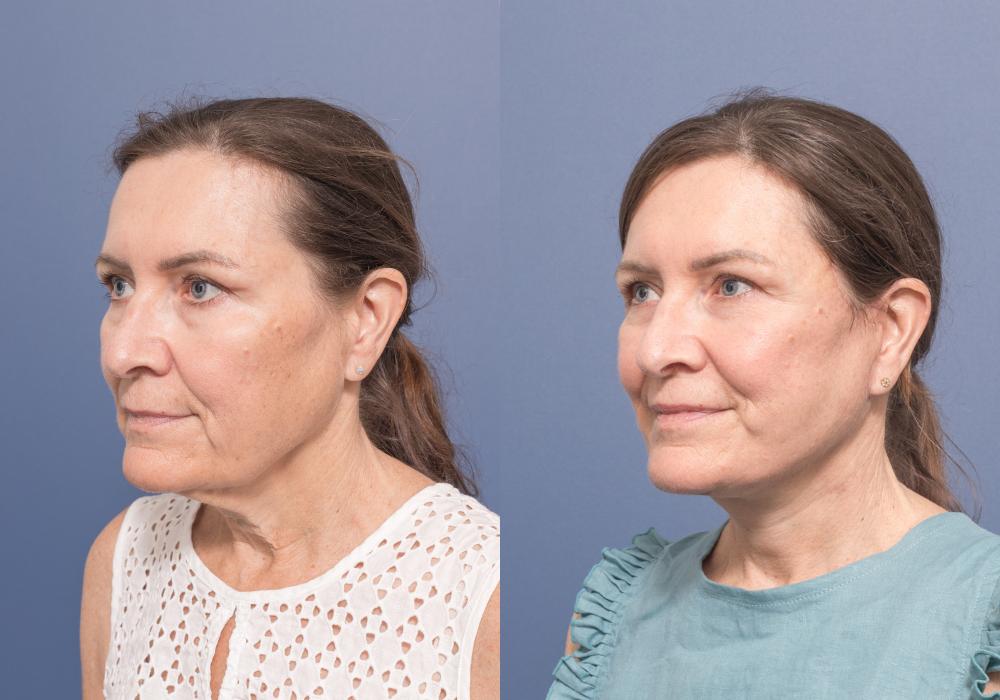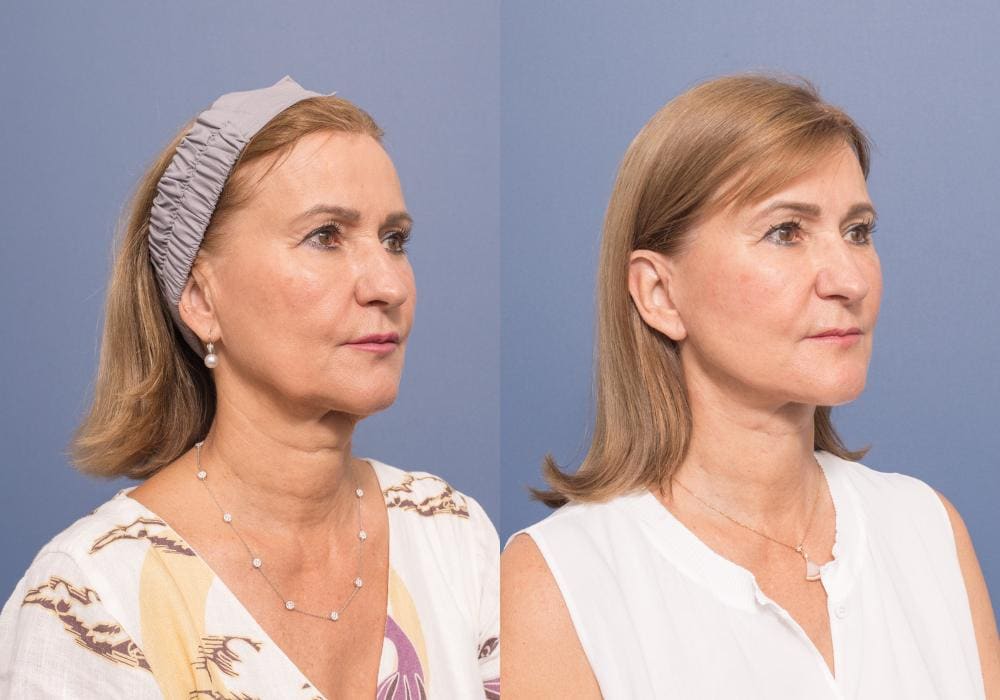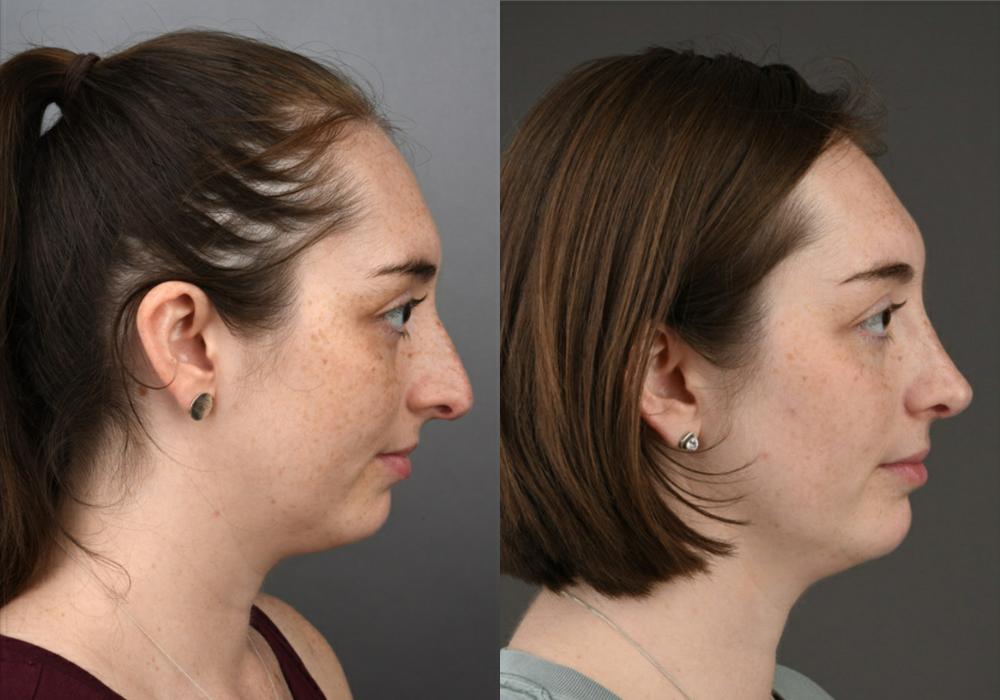Recovery
After undergoing a deep plane facelift, the recovery period typically involves bruising and swelling around the repositioned areas for the first 2-3 weeks. As the deep plane technique is performed in the layer that naturally exists in the face, individuals can expect minimal post-operative pain. Additionally, since the technique does not sever blood vessels between the muscle and skin, it preserves more of the natural blood supply to the skin and enables faster healing.
Individuals can expect to be either discharged on the day of surgery or spend one night at the private hospital before being discharged the following morning. This depends on the extent of surgery and the individuals age and health status.
During the healing period, individuals should anticipate considerable bruising and swelling, for which Dr. Honeybrook will recommend medications and provide detailed instructions on how to manage. These instructions may include the use of a compression garment, neck support, and surgical drains.
To allow for optimal healing, Dr. Honeybrook recommends that individuals plan to take at least three weeks off from work or social engagements and avoid strenuous activities for up to six weeks. Follow-up appointments will be scheduled to assess individuals’ progress and ensure a successful recovery.
Scars
The incisions made during a deep plane facelift typically result in minimal to no significant visible scarring. Unlike traditional facelifts, the deep plane technique suspends and supports the deeper facial tissues rather than the skin which eliminates tension or pulling on the incision lines. This tension-free closure promotes the incisions to heal seamlessly, leaving virtually imperceptible fine lines. Moreover, this approach prevents the occurrence of a “pixie ear” deformity, where there is elongation of the ear lobe and the earlobes migrate to appear artificially attached to a individuals face after a traditional facelift.
Note: Any surgical or invasive procedure carries risk. These risks will be discussed with you in detail during the consultation. For further information on risks please refer to the patient resources section of the website.





